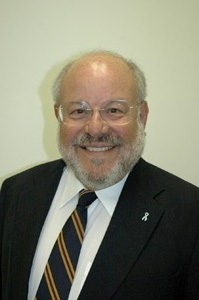This past April 26th marked the 24th anniversary of the Chernobyl nuclear plant accident. It came as the nuclear industry and pro-nuclear government officials in the United States and other nations were trying to "revive" nuclear power. And it followed the publication of a book, the most comprehensive study ever made, on the impacts of the Chernobyl disaster.
Chernobyl: Consequences of the Catastrophe for People and the Environment was published by the New York Academy of Sciences. It is authored by three noted scientists:
Russian biologist Dr. Alexey Yablokov, former environmental advisor to the Russian president; Dr. Alexey Nesterenko, a biologist and ecologist in Belarus; and Dr.Vassili Nesterenko, a physicist and at the time of the accident director of the Institute of Nuclear Energy of the National Academy of Sciences of Belarus. Its editor is Dr. Janette Sherman, a physician and toxicologist long-involved in studying the health impacts of radioactivity.The book is solidly based--on health data, radiological surveys and scientific reports--some 5,000 in all.
It concludes that based on records now available, some 985,000 people died, mainly of cancer, as a result of theChernobyl accident. That is between when the accident occurred in 1986 and 2004. More deaths, it projects, will follow.
The book explodes the claim of the International Atomic Energy Agency--still on its website that the expected death toll from the Chernobyl accident will be 4,000. The IAEA, the new book shows, is underestimating, to the extreme, the casualties of Chernobyl.
Alice Slater, representative in New York of the Nuclear Age Peace Foundation, comments: "The tragic news uncovered by the comprehensive new research that almost one million people died in the toxic aftermath of Chernobyl should be a wake-up call to people all over the world to petition their governments to put a halt to the current industry-driven "nuclear renaissance.' Aided by a corrupt IAEA, the world has been subjected to a massive cover-up and deception about the true damages caused by Chernobyl."
Further worsening the situation, she said, has been "the collusive agreement between the IAEA and the World Health Organization in which the WHO is precluded from publishing any research on radiation effects without consultation with the IAEA." WHO, the public health arm of the UN, has supported the IAEA's claim that 4,000 will die as a result of the accident.
The book also scores the position of the IAEA, set up through the UN in 1957 "to accelerate and enlarge the contribution of atomic energy," and its 1959 agreement with WHO. There is a "need to change," it says, the IAEA-WHO pact. It has muzzled the WHO, providing for the "hiding" from the "public of any information"unwanted" by the nuclear industry.
"An important lesson from the Chernobyl experience is that experts and organizations tied to the nuclear industry have dismissed and ignored the consequences of the catastrophe," it states.
The book details the spread of radioactive poisons following the explosion of Unit 4 of the Chernobyl nuclear plant on April 26, 1986. These major releases only ended when the fire at the reactor was brought under control in mid-May. Emitted were "hundreds of millions of curies, a quantity hundreds of times larger than the fallout from the atomic bombs dropped on Hiroshima and Nagasaki." The most extensive fall-out occurred in regions closest to the plant--in the Ukraine (the reactor was 60 miles from Kiev in Ukraine), Belarus and Russia.
However, there was fallout all over the world as the winds kept changing direction "so the radioactive emissions"covered an enormous territory."
The radioactive poisons sent billowing from the plant into the air included Cesium-137, Plutonium, Iodine-131 and Strontium-90.
There is a breakdown by country, highlighted by maps, of where the radionuclides fell out. Beyond Ukraine, Belarus and Russia, the countries included Bulgaria, Finland, France, Germany, Greece, Italy, Poland, Sweden and the United Kingdom. The radiological measurements show that some 10% of Chernobyl poisons "fell on Asia"Huge areas" of eastern Turkey and central China "were highly contaminated," reports the book. Northwestern Japan was impacted, too.
(Note: You can view every article as one long page if you sign up as an Advocate Member, or higher).





